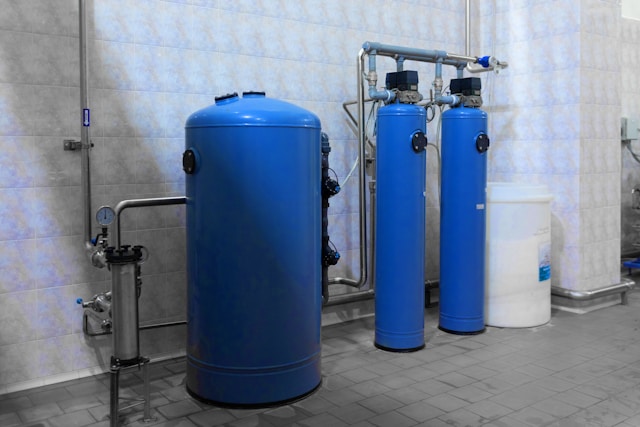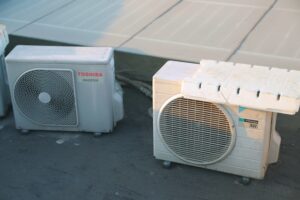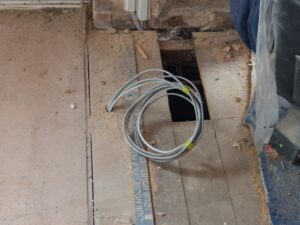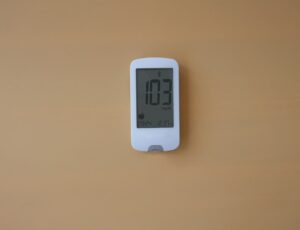Have you ever wondered how you can instantly get hot water when you turn on the tap?
A water heater circulation pump might be the solution you’re looking for. It ensures hot water flows quickly throughout your home, saving time and reducing water waste. This helps to make your daily routines smoother and more efficient.
Installing a circulation pump allows you to enjoy instant hot water and lower energy bills over time. The system circulates hot water efficiently, minimizing the amount of water wasted while waiting for it to heat up. This can bring both comfort and cost savings to your household.
Excel Mechanical offers expert services in HVAC and plumbing, ensuring you get the best system to fit your needs and budget. Our experienced team is dedicated to delivering exceptional quality for residential and commercial spaces, ensuring your satisfaction with every project.
Choose us for a hassle-free installation and superior service experience.
In this blog, we will cover:
- How water heater circulation pumps work and their purpose.
- The different types of circulation pumps available.
- Key features to consider when choosing the right pump for your home or business.
Here is all you need to know!
Understanding Water Heater Circulation Pumps
Water heater circulation pumps improve access to hot water by creating a system that reduces wait times and conserves water. This section explains the purpose, types, and function of these pumps.
Purpose and Benefits
Water heater circulation pumps make hot water readily available by moving it through your plumbing system. This means you don’t have to wait long for hot water after turning on the tap. By reducing this delay, circulation pumps help save water that would otherwise be wasted while you wait.
These pumps are especially helpful in large homes or buildings with water fixtures far from the heater. Installing a recirculation pump can lower water bills and improve energy efficiency.
Types of Circulation Pumps
There are several types of circulation pumps. The most common are full-time, on-demand, and thermostatically controlled pumps.
- Full-time Pump: Constantly circulates water, ensuring hot water is always available, but can use more energy.
- On-Demand Pump: Activates only when needed, using less energy. It operates when you press a button or when a sensor detects activity.
- Thermostatically Controlled Pump: This one runs based on the water temperature, maintaining a balance between availability and energy use.
Each type serves different needs, and choosing the right one depends on your home’s requirements and energy-saving goals.
How Circulation Pumps Work
Circulation pumps function by creating a loop in your plumbing.
Water continuously moves from the heater to the faucets and back. This looping action ensures you always have quick access to hot water.
Some systems use timers or sensors to determine when the pump operates, optimizing energy and water use. A timer can schedule the pump to work during peak hours, while sensors activate it based on water temperature or user demand.
Proper installation and maintenance are essential for efficient operation. Consulting with professionals ensures your system is set up correctly and provides reliable service long-term.
Key Features to Consider
Several factors can greatly impact the effectiveness and efficiency of a water heater circulation pump. Considering the technical aspects and additional features that enhance convenience and performance is important.
Flow Rate and Capacity
The flow rate of a water heater circulation pump determines how quickly hot water is delivered to fixtures.
A higher flow rate, measured in gallons per minute (GPM), means quicker access to hot water. Your home’s size and plumbing system layout will dictate the ideal flow rate.
Pump capacity is also crucial, ensuring the pump can handle the amount of water your system requires. If a pump is too small, it may struggle, while an oversized pump can waste energy.
Energy Efficiency
Energy efficiency is key for both eco-friendliness and cost savings.
Look for pumps with automatic shut-off, which turn the pump off when hot water isn’t needed. This helps reduce energy consumption. Some pumps use energy-efficient motors that further reduce electricity use.
An efficient pump can lower utility bills, making it a long-term investment. Our team provides energy-efficient options, ensuring high performance and value for money. Our pumps incorporate the latest technology to maximize savings while meeting your water heating needs.
Pump Controls and Settings
Modern circulation pumps often have customizable controls and settings, including timers and temperature sensors. These features allow you to schedule the pump’s activity, ensuring hot water is available when needed without unnecessarily running the pump.
Smart controls can connect to home automation systems for even more convenience. These settings not only enhance comfort but also contribute to energy efficiency. Choosing a pump with the right controls can make managing your hot water system much easier and more effective, tailored to fit your lifestyle.
Installation Process
Installing a water heater circulation pump can enhance your home’s convenience by providing instant hot water. Understanding the requirements and steps can help ensure a smooth installation process.
Pre-Installation Requirements
Before starting the installation, gather all needed tools and materials.
Typically, you will need a wrench, a screwdriver, Teflon tape, and the circulation pump kit itself. Ensure you have access to the main water supply and that it’s turned off to prevent leaks.
Verify compatibility between the pump and your existing water heater system. Check the manufacturer’s guidelines for specific information.
Knowing your system’s specifications will help you avoid problems and ensure efficient operation once installed.
Step-by-Step Installation Guide
- Begin by positioning the circulation pump according to the manufacturer’s instructions. Typically, the pump is installed at the water heater outlet. This setup allows for the best hot water circulation throughout your home efficiently.
- Secure the pump firmly using the appropriate fittings and connectors. Teflon tape can help ensure a watertight seal. Once connected, turn on the water supply to check for leaks. Tighten any loose connections as needed.
- Next, connect the pump to a power source. Follow the manufacturer’s electrical guidelines carefully to ensure safe and proper functioning. Test the pump system to ensure it’s operating correctly and providing consistent hot water to your fixtures.
Professional Vs. DIY Installation
Deciding between professional help and a DIY approach depends on your comfort level.
A DIY installation can save costs and is feasible with proper preparation and understanding.
Hiring professionals like Excel Mechanical can ensure the job is done with exceptional quality and great value. Our team provides tailored solutions to fit your specific needs and budget. This can be particularly beneficial for more complex systems or commercial setups.
Maintenance and Upkeep
Taking care of your water heater circulation pump ensures it runs efficiently and lasts longer. Pay attention to regular maintenance tasks, recognize common issues, and know when to repair or replace vital components.
Regular Maintenance Tasks
Routine checks and maintenance keep your system running smoothly.
- Start by inspecting the pump and its connections for any visible leaks or signs of wear.
- Clean the pump inlet and outlet to prevent clogs that can reduce efficiency.
- Lubricate moving parts if recommended by the manufacturer.
- Check the system’s pressure and temperature settings, adjusting them as needed.
- Regularly draining the water heater tank helps remove sediment, which can affect performance.
Utilize these measures to ensure your pump operates effectively.
Troubleshooting Common Issues
Despite the best upkeep, problems may arise.
- If you notice unusual noises, check for debris or air in the system.
- A lack of hot water might indicate a faulty pump, thermostat, or valve.
- Inspect electrical connections for loose wires.
- If you experience inconsistent water temperature, it could be due to sensor malfunctions or sediment buildup.
Address these concerns promptly to prevent larger problems.
When to Replace or Repair
Knowing when to repair or replace the pump is crucial for maintaining efficiency.
If the pump frequently breaks down, replacement might be more cost-effective. Assess whether repairs will extend the lifespan without recurring issues.
Consider the pump’s age and the extent of any damage. If repair costs approach the price of a new unit, replacing it may be wiser.
Our team offers top-notch solutions tailored to your needs and budget for residential and commercial services. Our expertise ensures your system meets your expectations for quality and value.
System Integration
Integrating a water heater recirculation pump involves ensuring it aligns smoothly with your current setup and the advancements in smart technology. It requires thoughtful consideration to enhance efficiency and convenience in your home without unnecessary complications.
Compatibility with Existing Systems
Before installing a recirculation pump, check if it is compatible with your water heating system. This involves looking at your current water heater’s size, type, and age. Older systems might need upgrades or adjustments to handle the new pump effectively.
When selecting a pump, consider its energy requirements and your plumbing arrangement. If your system uses specific materials or designs, you may need specialized pumps to fit neatly into the network. This ensures long-term durability and performance.
Smart Home Integration
Incorporating a recirculation pump into a smart home setup can enhance overall efficiency and convenience.
Many pumps can be controlled using mobile apps or integrated with home assistants like Alexa or Google Home, allowing you to manage settings and monitor energy usage from anywhere.
When considering smart integration, look for pumps that offer compatibility with your existing smart home devices. Key features include programmable schedules and remote monitoring, which can help reduce energy waste by supplying hot water only when needed.
Cost Considerations
Investing in a water heater circulation pump can involve several costs and savings. These pumps often have an initial purchase price, require ongoing energy costs, and may offer long-term savings on water bills.
Initial Investment
The initial cost of a water heater circulation pump can vary depending on the model and features. Basic models might be less expensive, while advanced systems with smart controls could be more expensive. Expect to spend between $200 and $800.
Installation costs depend on your home’s plumbing setup. For those new to this system, consider professional installation for proper functioning.
Operating Costs
Operating costs are mainly linked to the energy used by the pump.
Some models run continuously, increasing electricity usage. Others, with built-in timers or sensors, operate only as needed, reducing costs.
Expect energy costs of $5 to $20 per month. Opt for energy-efficient models to minimize expenses. Regular maintenance can keep your system running efficiently, avoiding potential costly repairs.
Potential Savings
A circulation pump reduces water waste by providing hot water quickly at the tap.
This decrease in wasted water can mean noticeable savings on utility bills. Depending on water prices and usage, annual savings can range from $20 to $100.
In addition to saving water, using a circulation pump can enhance comfort and convenience in your home. By choosing us, you ensure you get a system designed to meet your specific needs and budget, providing excellent value and exceptional quality in residential and commercial settings.
Environmental Impact and Regulations
Water heater circulation pumps are crucial for energy savings and reducing water waste. This section highlights how they meet energy standards and contribute to environmental benefits.
Energy Conservation Standards
Water heater circulation pumps are designed to meet strict energy conservation standards.
These standards ensure that the pumps operate efficiently, minimizing energy usage. This is achieved by using advanced technology that allows the pump to circulate hot water only when needed. This reduces the need for the water heater to constantly heat and reheat water, which can significantly cut down on energy consumption.
Energy standards must be monitored as they continuously evolve to incorporate better technology. Manufacturers must design pumps that not only meet current regulations but also anticipate future changes.
By choosing a pump that meets these standards, you ensure compliance and enjoy reduced energy bills.
Environmental Benefits
Installing a water heater circulation pump offers several environmental benefits.
One major advantage is the reduction in water waste. These pumps create a loop that keeps hot water readily available, so you don’t have to let the tap run, waiting for it to warm up. This can save thousands of gallons of water annually in a typical household.
When you opt for our services, you make a choice that supports sustainable practices. Our experts can help you find the perfect system that balances performance, cost, and environmental impact, providing great value for your investment while supporting green initiatives.
Choosing a Circulation Pump
When selecting a circulation pump, you should consider different brands and models, as well as the warranty and support that come with your choice. These factors ensure you have a reliable system that matches your home’s needs.
Brands and Models
There are various brands and models to choose from, each offering unique features.
It’s important to consider the energy efficiency, size, and compatibility with your existing system. Brands might have specific strengths, such as quieter operation or faster heating time.
Comparing these can help you find the right fit.
Warranty and Support
When buying a circulation pump, the warranty and support options are essential.
A good warranty covers essential parts and labor, giving you peace of mind in case of failure. Some brands offer extended warranties or special service agreements, saving you from unexpected expenses.
Always compare support options and choose a company that puts your needs first.
Conclusion
A hot water heater circulation pump in your home or business offers excellent benefits. These pumps ensure instant hot water whenever you need it, helping you save time throughout your day. By reducing water waste, they also support eco-friendly practices.
Choosing the right pump helps achieve efficiency and comfort. Excel Mechanical is an excellent choice for your HVAC and plumbing needs. Our team provides unmatched quality and value. We understand each client’s needs and budget to deliver the best solutions.
Knowing your options is key for both residential and commercial properties. Relying on skilled professionals like us ensures you receive top-notch service. With our commitment to excellence, you can trust us to handle your water heater circulation pump needs effectively.
Frequently Asked Questions
You may have some questions about how a hot water recirculating pump works or how it can benefit your home. To help you out, we’ve answered some of the most common questions we get. Whether you’re considering installing a pump or wondering about its long-term benefits, we’ve got you covered with everything you need to know.
What is the installation process for a hot water recirculating pump?
Installing a hot water recirculating pump usually involves attaching the pump to the water heater and connecting it to the plumbing system. You may need a professional for precise installation, ensuring everything is properly sealed and the pump functions effectively.
How does a hot water recirculating pump improve system efficiency?
A hot water recirculating pump boosts efficiency by quickly delivering hot water to fixtures, reducing water waste and waiting time. By maintaining a loop of heated water, the system repeatedly returns unused water to the heater, readying it when you turn on the tap.
Which models are considered the best hot water recirculating pumps on the market?
Some models are known for their reliability and energy efficiency, making them popular choices. While researching, look for models with features like adjustable timers and sensors that help conserve energy while providing instant hot water access. Always consider your specific needs when selecting a pump.
Can a recirculating pump be installed on a tankless water heater?
Yes, a recirculating pump can be added to a tankless water heater to ensure quick access to hot water. Tankless systems are designed to heat water on demand, and with a pump, this process becomes even faster, ensuring significant water savings and convenience.
What are the signs of a failing hot water circulating pump?
Signs of a failing circulating pump may include unusual noises, decreased water flow, or inconsistent water temperatures. If you notice any issues, it might be time for an inspection or replacement. Addressing problems early can prevent them from becoming more costly in the future.
What are the cost-benefit considerations when installing a recirculating pump on a water heater?
The initial installation cost might seem high, but the long-term savings in water usage and energy costs often outweigh it. Evaluate your household’s water usage and consider potential savings in your decision.




